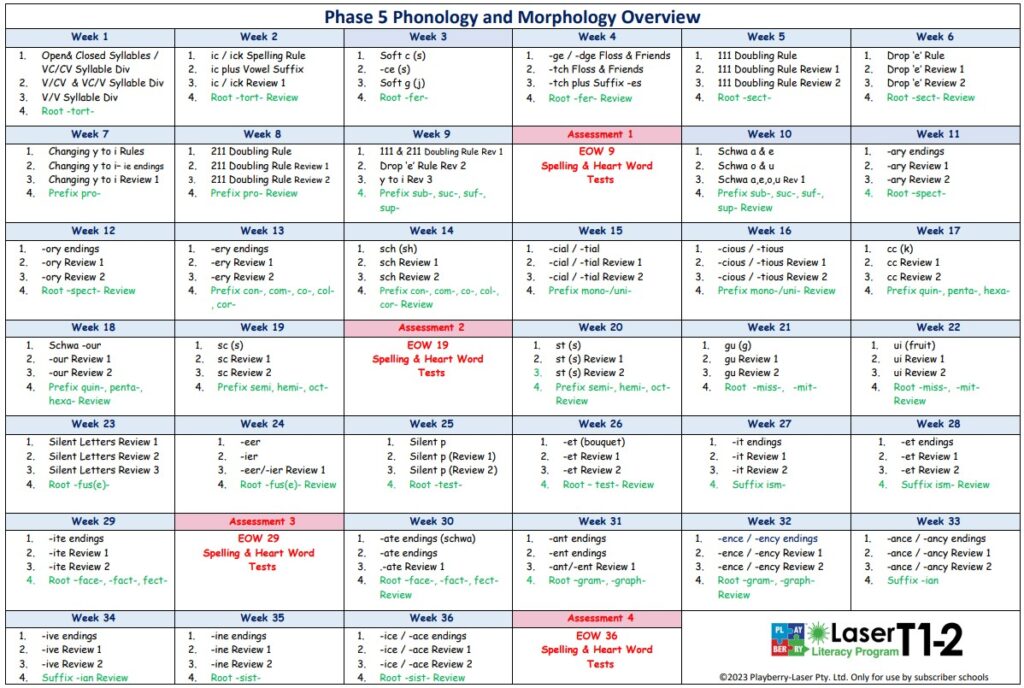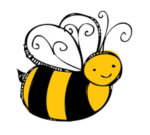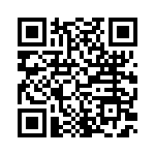“Playberry Laser has been a game-changer for us, taking the theory of what we should be doing and giving us a practical playbook to follow. Prior to this, we had teachers working five hours a week to put together resources for their own year levels, and we were still faced with a years-long task to develop a coherent, consistent program that didn’t leave any gaps. We’ve really appreciated working with Bill, Christie-Lee, Linda and Kim to get our heads around the program, and we’ve been amazed at the progress our students have made.”
Andrew Boesch – Immanuel Primary School Gawler
Playberry Laser T1-2 Online Platform
Experience has shown us that the recurring issue with the uptake and effective delivery of quality primary literacy programs comes down to two things:
- Teaching teachers the complex knowledge about the English Orthography
- Freeing them from hours of lesson and materials preparation so they can embed knowledge and learn to teach it effectively
With this in mind, we have designed a teacher-supportive multisensory literacy resource for primary teachers to support their teaching in line with research. We’ve taken the planning and resource design load to free teachers to focus on building content knowledge and sharpening their delivery. Even teachers teaching in line with structured literacy principles for years are thrilled by not having to create their materials!
For less experienced and graduate teachers, we want to help them get where they need to be as quickly as possible. Being up late every night developing materials doesn’t achieve this outcome! Students need energised, well-slept and knowledgeable teachers who teach effectively.
Effective literacy teaching is not ‘choose your own adventure’, so our resources cannot be altered. We do this to ensure our scope and sequences are adhered to, lesson plans are tight, review is incorporated, and curriculum variance is kept to a minimum. Our diagnostic assessments track what students have retained, making planning for small group (tier 2) intervention easier.
Playberry Laser T1-2 is changing the game in schools. This is what teachers have been crying out for.
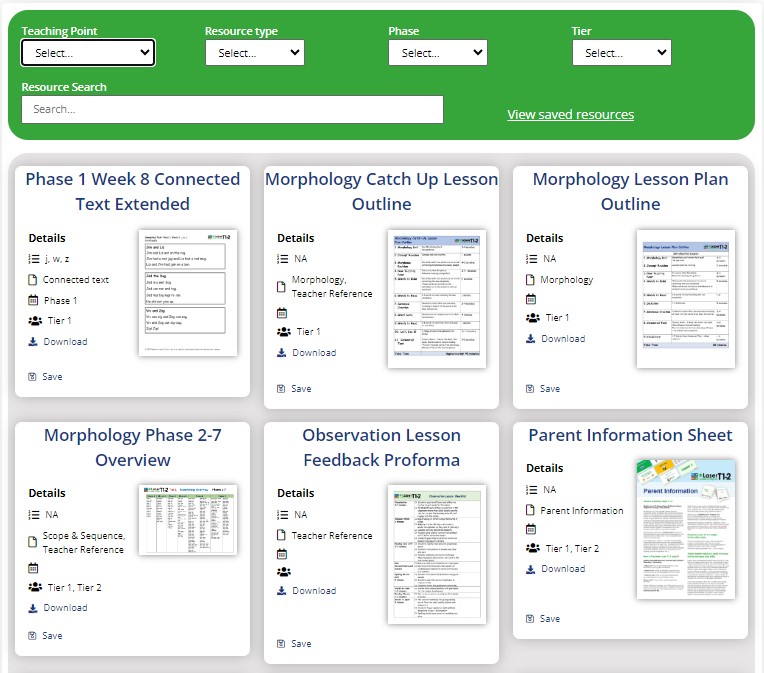
Easy to Find Your Way Around
The streamlined approach implemented in our platform marks an advancement in how educators interact with instructional materials. The Playberry-Laser platform’s interface facilitates effortless navigation between lessons and resources, reducing teachers’ time organizing and accessing resources and allowing them to focus more on instructional delivery and student engagement.
The inclusion of a robust search function further amplifies the platform’s utility for educators. This feature empowers teachers and support staff to pinpoint specific lessons or resources by entering keywords. By providing this efficient search mechanism, our platform allows teachers and intervention specialists to locate worksheets and tier 2 resources quickly.
Over 35,000 Lesson Slides
Set out day-to-day, week-to-week and term-to-term for reception (prep) to grade six. Lessons contain review of previously taught GPCs, spelling rules, grammar concepts and morphology.
The on-screen slides link to our alphabet, phonology and morphology card decks, so everything is in line. Built-in audio prompts on the slides keep teaching direct and tight. New teaching points contain embedded voice prompts for teachers and prompt multisensory teaching routines. These can be abandoned when teachers no longer need them. Dictations and connected texts are built in to consolidate learning through scaffolded and independent practice.
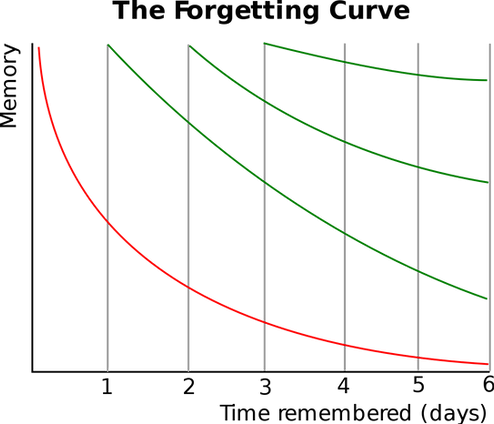
Built in Review
“But we taught the floss rule last year; how come none of them remember it?” Sound familiar?
Cognitive Psychology has helped us understand the importance of spaced, interleaved retrieval practice for transferring information into long term memory and building automaticity. Repeated exposure to new learning is helpful to all students, critical to many and harmful to none. We have done the heavy lifting for teachers in this regard. Our lessons have a built-in review schedule, so previous learning pops back up just at the right time to be consolidated and retained. Our lesson slides utilise faded examples to scaffold students toward mastery. Ebbinghaus’s Forgetting Curve (left) is a cornerstone of what we understand about the importance of revision. Learn more here.
Decodable Connected Texts
Over 500 decodable connected texts are embedded in lesson slides for read-alouds and choral reads. Each connected text is in downloadable PDF form so that they can be used for fluency-paired reading, independent reading or home reading.
Our texts range from zany narratives to procedural and expository texts. We cover a wide range of high-interest topics to build students’ general knowledge and stimulate thinking that can be explored in other subject areas. We’ve also created definition slides for phase 1-5 connected tests.
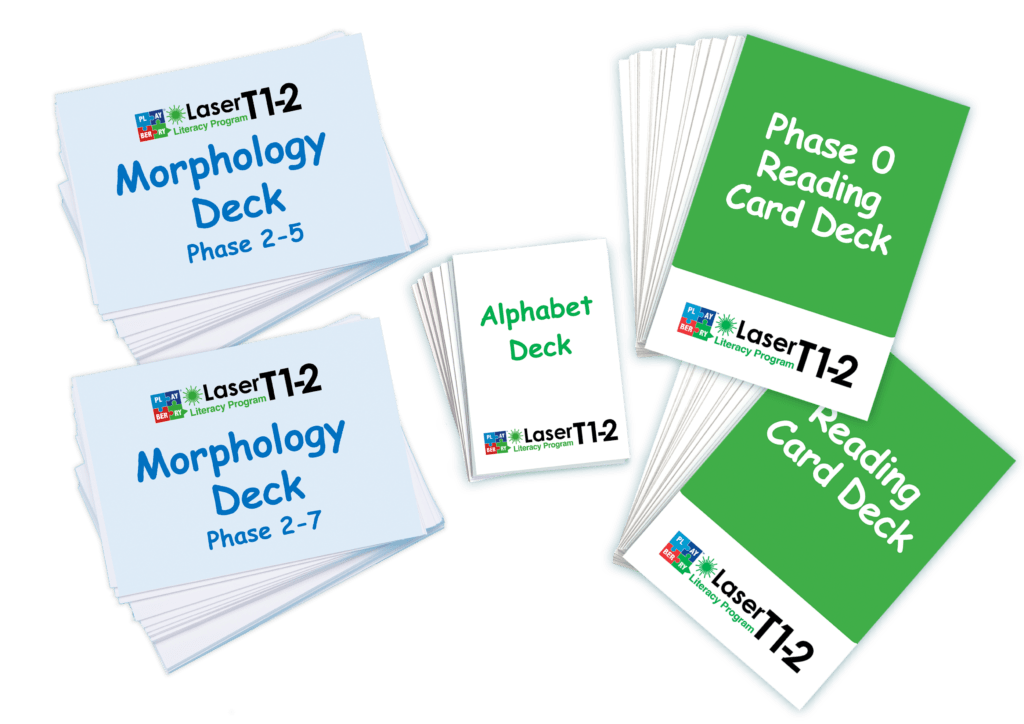
Integrated Card Decks
Grapheme-Phoneme Correspondence and Letter Naming routines are prompted by the lesson slides, and each has accompanying card decks. The Reading Card Deck cards are double-sided with clue word prompts, all phonemes for the grapheme listed, as well as reminders of any associated spelling rules that apply to particular graphemes. Instructions for card routines are clearly outlined in the teacher’s manual on the online platform. Letter naming – being able to quickly identify and correctly name the letters of the alphabet – is highly predictive of reading success. Our Alphabet card deck has a lowercase on one side and uppercase on the other. Vowels and consonants are in different colours.
Teachers...we've got you covered.
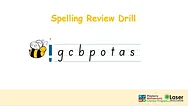


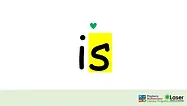

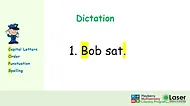


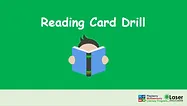

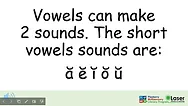
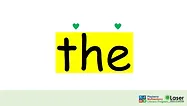
Concise Weekly Planners
Teaching places significant cognitive demands on educators, especially those new to structured literacy teaching. Lesson planning, content delivery, and addressing individual student needs can be overwhelming. We’ve recognized this challenge and have designed weekly planners specifically to alleviate some of these cognitive burdens.
Planners guide teachers through lesson components. They provide detailed instructions on the inclusion of review decks, graphemes, spelling words for revision, new teaching points, heart (irregular) words, dictation sentences, connected texts, and vocabulary words. The planners act as invaluable roadmaps, ensuring that educators are equipped for each lesson.
Educators can supplement the planner with handwritten notes, tailoring the content delivery to better suit student needs. This flexibility acknowledges the dynamic nature of teaching, allowing for adaptability without compromising the integrity of the structured literacy program.
Our primary objective is to enable teachers to dedicate the majority of their attention to diagnostic teaching, refining instructional routines and enhancing student responsiveness. While content delivery is crucial, we firmly believe that effective pedagogy stands as an equally vital component of successful teaching practices.
Easy Access Overviews
In the vast landscape of our comprehensive resources, it’s easy to lose sight of the broader educational objectives. To counter this, we offer downloadable overviews and scopes and sequences specifically tailored for phonology, morphology, and heart words.
These resources serve as concise yet comprehensive guides, ensuring educators can swiftly access pertinent information when required. Additionally, these downloadable resources prove invaluable in swiftly gathering materials for tier 2 intervention groups, facilitating expedited support for students needing additional assistance.
Know exactly where in the Program to start your class
A diagnostic spelling assessment completely removes the guesswork from deciding where a class needs to start in our scope and sequence. If they can spell it, it’s a safe assumption that they can read it. We have partnered with Progress Educational Consulting to build the data analysis tool that gives a macro and micro view of exactly which GPCs and spelling conventions students know and don’t know. This incredibly powerful tool informs whole class teaching and even provides intervention foci for individuals or groups. Paired with Dibels (our preferred whole school monitoring system), we have data-informed teaching covered.
Help your parents understand structured literacy instruction
Parents have many questions, especially if the kind of teaching they now see in their classrooms differs from before. Our Parent Information handout is a helpful start for schools communicating these differences. “Why are the levelled readers gone?” “What happened to reading groups?” and Why is the same material being taught to everyone?” “What if my child is ahead or falling behind the class?” “What’s a phoneme, a grapheme and a morpheme?” Now that we have finally left behind old and mistaken ideas that learning to read is natural, we’ve all had to up our game!
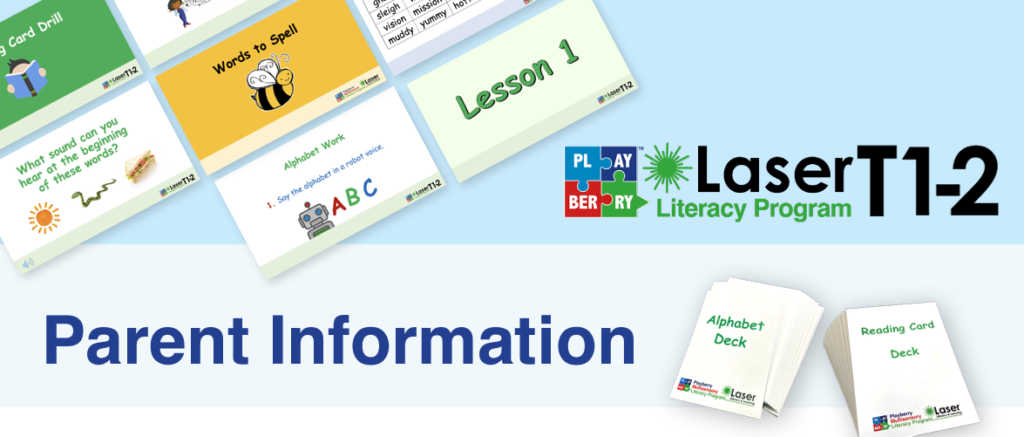




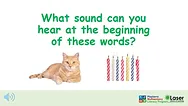

Structured Multisensory Literacy Teaching and Intervention Across your School

Our Story
The Playberry Multisensory Literacy Program, developed by Alison Playford and Bill Hansberry, began in 2017 as a tier-three intervention for students with dyslexia and other reading disorders. Our training courses, Teaching Students with Dyslexia (TSD) and the Playberry T3 Intensive Intervention Multisensory Program, haven’t only impacted intervention programs but have had a profound impact on the classroom (tier 1). The Playberry T3 program has been the catalyst for change in many schools. Many of South Australia’s highest-performing schools began their transformation because of one passionate TSD-trained teacher.
Playberry Tier 3 is the intervention program of choice in many high-performing schools and practices across Australia.
Linda Clune (Laser Literacy) and Christie-Lee Hansberry (Hansberry Educational Consulting), both TSD graduates and Playberry Multisensory Specialist Teachers, have helped schools achieve remarkable results with their training and coaching. In 2022, Christie-Lee, Linda, Scott (Linda’s husband), and Bill put their heads together to expand Playberry into Tier 1, and Playberry Laser T1-2 was born.
Sustainable change is the only change that matters, and this is precisely what Playberry Laser T1-2 and Playberry T3 offer. It is a complete package for schools with a clear and committed mandate to lift the literacy results of all students.


















